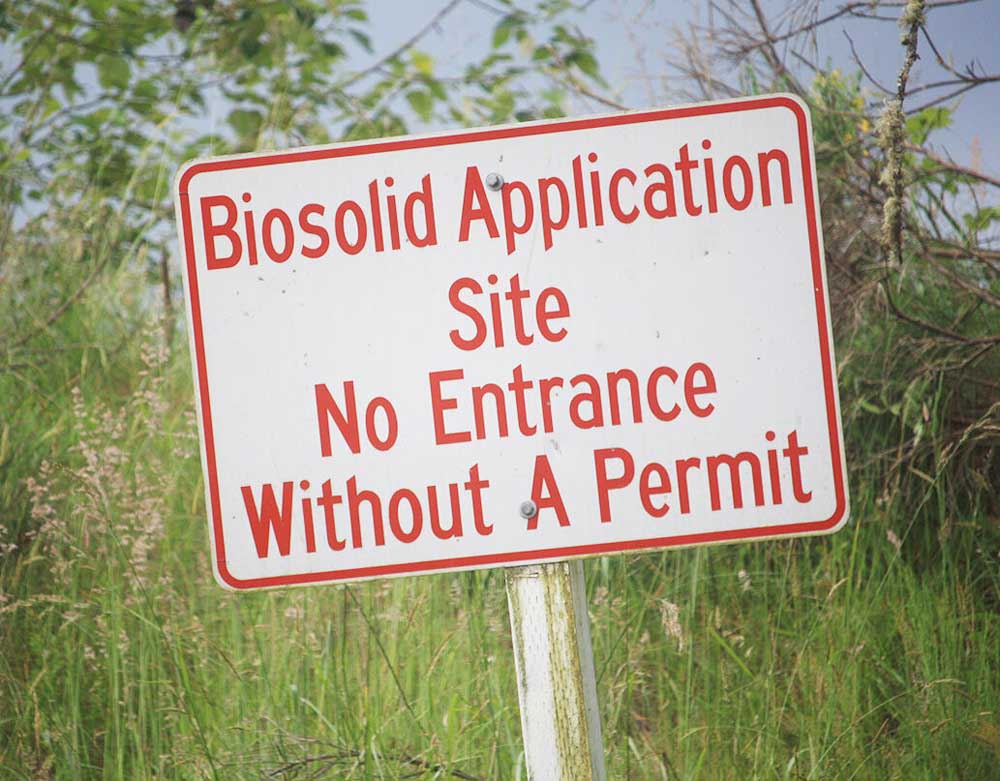Washington Ecology revises rules for biosolids
Published 5:00 pm Thursday, June 16, 2022

- A sign in Castle Rock, Wash., warns the public to stay away from vegetation fertilized with biosolids. The Washington Department of Ecology has rolled out new rules for applying biosolids.
The Washington Department of Ecology has rolled out new rules for applying biosolids, promising to fast-track proposals to fertilize land with treated human waste.
Trending
Ecology rejected concerns that biosolids contaminate land, water and food. Biosolids can replace petrochemical fertilizers and benefit farmers and the soil, the department said.
“Biosolids are a valuable resource that save all of us millions of dollars every year when they are diverted from expensive landfills to beneficial uses, like low-cost fertilizer and compost,” Ecology solid waste program manager Laurie Davies said in a statement.
Biosolids were spread on 28,000 acres in 2020. It’s unknown how many of those acres were in agricultural production. It’s unlikely anyone eats much food fertilized with biosolids, according to Ecology.
Trending
Ecology has issued permits to produce, treat and apply biosolids for 25 years. The revised rules take effect July 15 and specify requirements for permit holders.
For the first time, Ecology will automatically grant permits to wastewater plants, even if they don’t have biosolids programs.
In some places, biosolids are stored in lagoons, while in other cases they are sent elsewhere to be further treated or disposed of, according to Ecology.
The department said speeding up the issuing of permits was a “major step forward in good business practices.”
The department received 146 comments on the proposed rules. Many were from individuals or environmental groups concerned about pollutants in biosolids.
In response, Ecology robustly defended fertilizing with biosolids. Applying biosolids was better than burying it in landfills or burning it in incinerators, the department said.
Biosolids have pollutants such as arsenic, lead and mercury, but concentrations are so low that it would take centuries of applications to be a concern, according to Ecology.
To prevent applying too much biosolids and risk nitrates leeching into groundwater, fields must tested. Biosolids can’t be spread within 100 feet of a well or surface water.
The rules also require waiting periods before crops that were fertilized with biosolids are harvested.
For crops that do not touch biosolids, the waiting period is 30 days. Feed crops, such as hay and corn, have the same waiting period.
The waiting period for plants that touch biosolids is 14 months. The waiting period for crops such as potatoes and onions ranges from 20 to 38 months.
In 2018, the Office of the Inspector General issued a report criticizing the Environmental Protection Agency’s oversight of biosolids.
The report said the EPA didn’t have information about pollutants such as pharmaceuticals, steroids and flame retardants in biosolids.
The EPA said research is ongoing and defended biosolids as a valuable resource. The agency said the presence of a pollutant doesn’t equal a health hazard.
The Washington Department of Ecology criticizes the report, arguing that it was biased.







